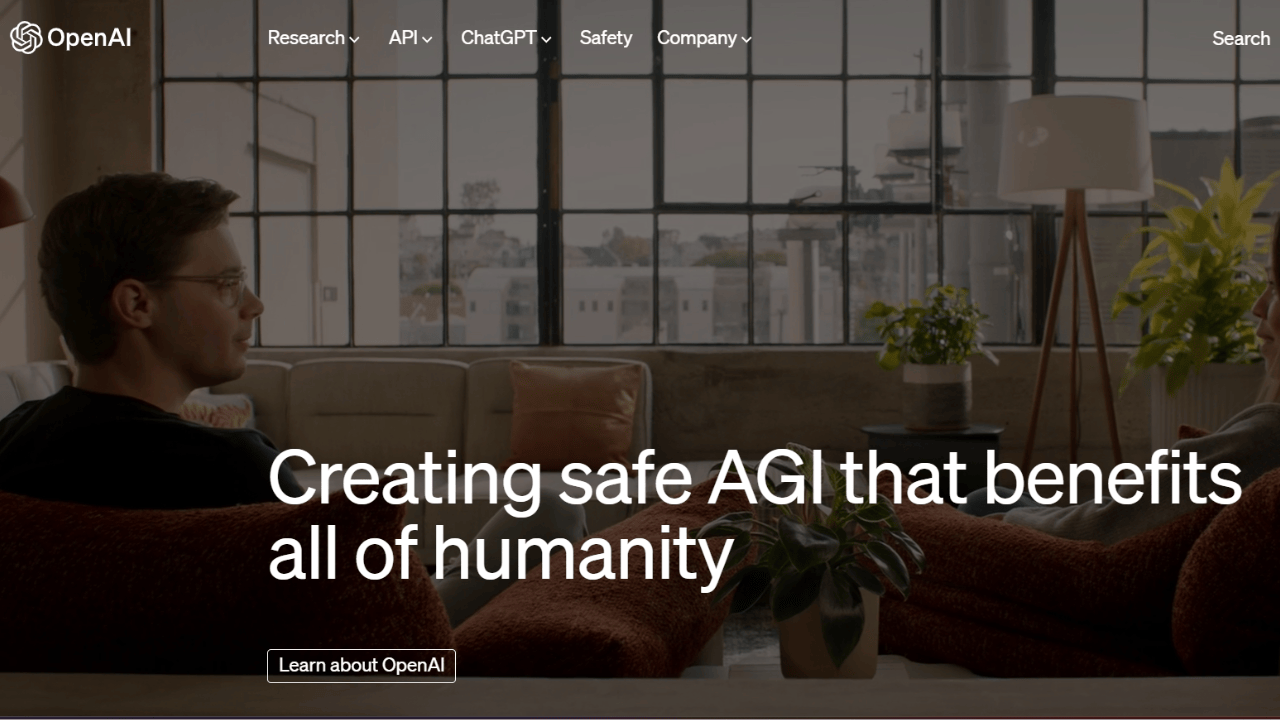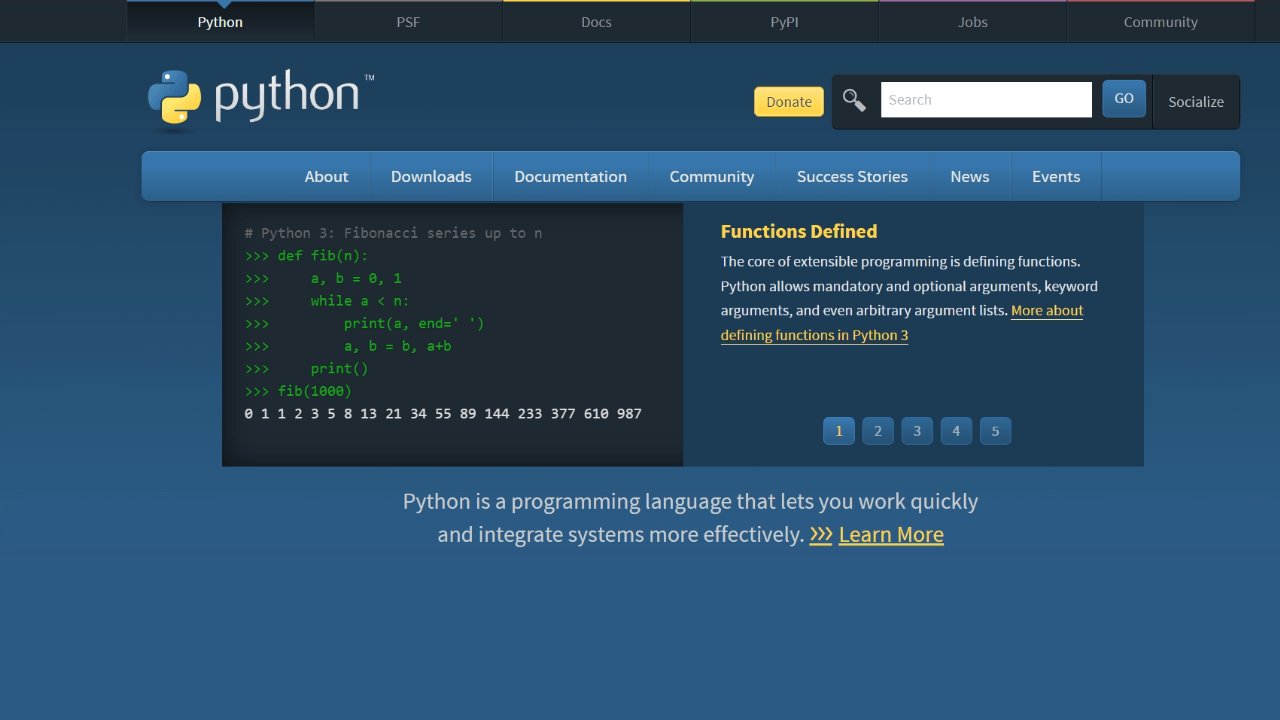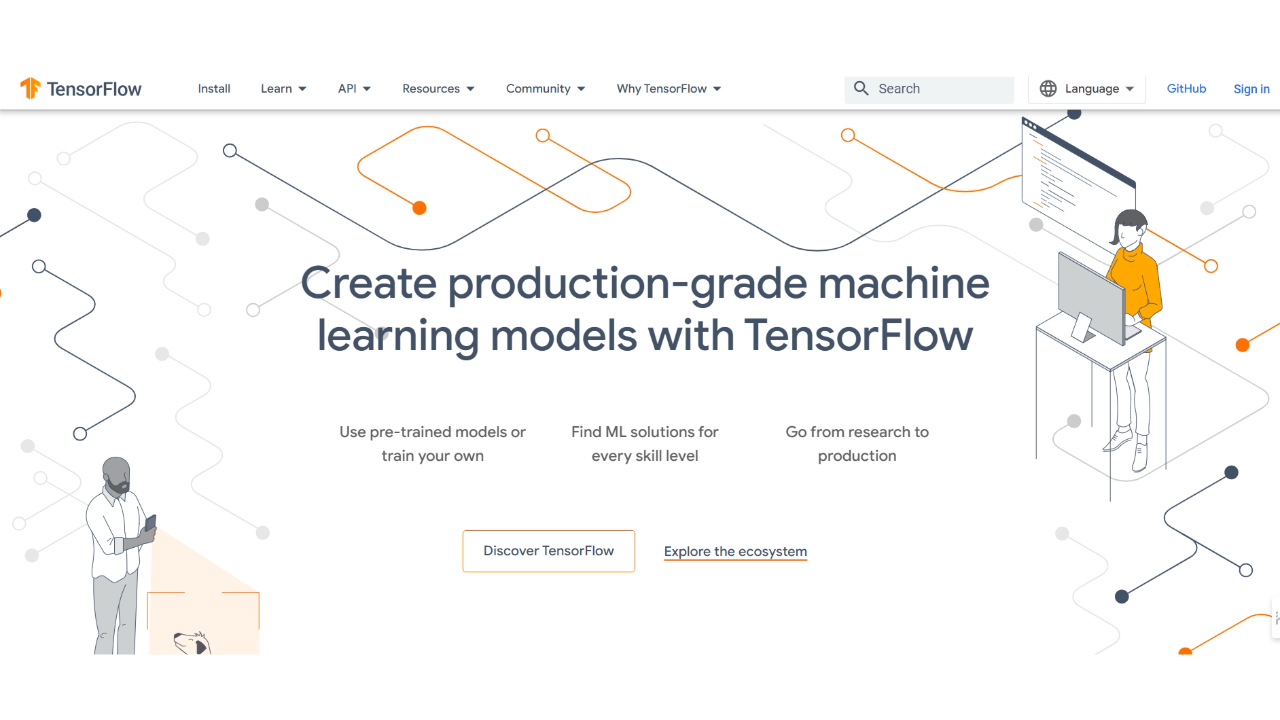How To Train ChatGPT With Your Own Data & Build a Custom AI Chatbot
By Marco Franzoni • January 17, 2024

Introduction: Unveiling the Power of Custom AI Chatbots
In an era where instant, personalized communication is king, the emergence of AI chatbots has been nothing short of a digital revolution. These sophisticated conversational AI systems are not just redefining customer interactions; they're reshaping how businesses connect with their audience. At the forefront of this transformation are custom AI chatbots, tailored tools that go beyond generic responses to offer contextually rich and meaningful engagements. In this exploration, we'll unlock the secrets of training conversational AI models, specifically focusing on how to skillfully train ChatGPT with your unique data. This isn't just about programming a machine; it's about creating a dynamic, intelligent partner that understands and resonates with your brand's voice. Join us as we embark on this journey to transform your customer interactions with the unmatched power of custom AI chatbots.

What is AI, OpenAI, and ChatGPT?
Understanding the Evolution of AI and Its Impact
Artificial Intelligence (AI), a term that once conjured images of sci-fi fantasies, has now become an integral part of our daily lives. Its evolution, rooted in disciplines like machine learning and natural language processing, has dramatically transformed industries and personal experiences. From simple automated responses to complex problem-solving tasks, AI's capabilities have expanded, largely due to the advancements in deep learning algorithms. This growth has not only automated mundane tasks but has also opened new frontiers in personalized technology services.
OpenAI's Role in Advancing AI Technology
In the realm of AI's rapid development, OpenAI stands as a beacon of innovation and progress. OpenAI, with its commitment to advancing digital intelligence in a way that is beneficial to humanity, has been instrumental in pushing the boundaries of what AI can achieve. Their work in developing advanced language models has set new standards in the AI industry, showcasing the incredible potential of well-crafted machine learning systems. OpenAI’s contributions have made complex AI technology more accessible and applicable in real-world scenarios.
Decoding ChatGPT: The Conversational AI Revolution
ChatGPT, a prodigy of OpenAI's advanced language models, is a prime example of the revolution in conversational AI systems. Unlike its predecessors, ChatGPT is designed to understand and generate human-like text, making interactions with AI more seamless and natural than ever. This technology is not just about parsing words but about grasping context, emotion, and nuances in language, a leap made possible by sophisticated natural language processing techniques. ChatGPT's ability to learn and adapt from user inputs has made it a cornerstone technology for businesses and individuals alike, seeking to harness the power of AI in their digital communication strategies.
Snag Your OpenAI API Key to Train Your Custom ChatGPT AI Chatbot
The Importance of an API Key
To embark on the journey of creating a custom ChatGPT AI chatbot, the first crucial step is obtaining an API key from OpenAI. This key acts as a unique identifier, granting you access to OpenAI's powerful language models. It's the gateway to customizing and fine-tuning ChatGPT to suit your specific needs. The API key is vital not just for authentication but also for tracking usage and ensuring secure access to OpenAI's services.
Steps to Obtain Your OpenAI API Key
Securing your OpenAI API key is a straightforward process. Begin by visiting the OpenAI website and signing up for an account. Once your account is active, navigate to the API section and select 'Create New API Key'. Here, you'll be prompted to generate a new key or view existing api keys. After following the instructions, your unique API key will be provided. It’s essential to keep this key confidential, as it is the actual api key that connects your applications with OpenAI's capabilities. Remember, this key is your secret key to unlocking the full potential of AI in your custom chatbot.
Understanding ChatGPT and Training Data
The Mechanics of ChatGPT
ChatGPT, a cutting-edge chatbot developed by OpenAI, operates on principles that are central to modern AI and machine learning. At its core, the ChatGPT model is a sophisticated machine learning model designed to understand, interpret, and generate human-like text. This capability is rooted in its training on a vast array of data, allowing it to respond to queries with remarkable accuracy and relevance. The model's design enables it to learn patterns in language and conversation, adapt to new information, and even exhibit a degree of creativity in its responses. This adaptability makes ChatGPT an invaluable asset in various applications, from customer service to personalized virtual assistance.
The Significance of Quality Training Data
The efficacy of ChatGPT, or any AI model, is deeply tied to the quality of its training data. This data is not just a collection of random texts but a curated set of information that represents a wide range of human interactions. Quality training data should be diverse, accurate, and relevant, encompassing various linguistic styles and contexts. This is where custom data comes into play. By training ChatGPT on custom data, tailored specifically to your needs and the needs of your audience, you elevate the chatbot's ability to provide contextually relevant and meaningful interactions. The training data serves as the foundational knowledge base for the chatbot, shaping its responses and interactions. Therefore, the careful selection and preparation of your data source are crucial steps in developing a ChatGPT model that truly resonates with your users and represents your brand effectively.

Building a Custom ChatGPT-Trained Chatbot Using the ChatGPT API
The Architecture of a ChatGPT-Trained Chatbot
Creating a custom chatbot that is trained using ChatGPT involves understanding the underlying architecture of this advanced AI system. At its heart is the trained ChatGPT model, an intricate framework developed by OpenAI. This model is built on layers of algorithms that process and generate language based on the training it has received. When you train ChatGPT with specific data, you're essentially fine-tuning these layers to align with your unique requirements. The result is a chatbot that not only understands general human conversation but is also adept at handling queries specific to your domain or business.
Leveraging the ChatGPT API for Customization
The true power in building a custom ChatGPT chatbot lies in leveraging the ChatGPT API. This API serves as a bridge between your custom chatbot and OpenAI's ChatGPT model, allowing you to access and utilize the model's capabilities. Through the API, you can feed your unique data into the ChatGPT model, effectively training it to reflect your specific conversational needs and style. Whether it’s incorporating industry-specific jargon or tailoring responses to reflect your brand's tone, the ChatGPT API provides the tools necessary for creating a highly customized, intelligent chatbot. This custom-trained ChatGPT can then interact with users in a way that feels natural, engaging, and distinctly representative of your brand's voice.
Collecting and Curating Data from Various Sources
Sources of Rich Data for Training
The foundation of any robust AI chatbot is the data it is trained on. Collecting data for training your ChatGPT model involves identifying and gathering information from a variety of sources. This data can range from existing customer service transcripts and FAQs to more complex sources like sql files or industry-specific documents. For businesses with digital footprints, website interactions, and online queries are invaluable data sources. Moreover, for more technical domains, parsing pdf files can yield a treasure trove of information. The key is to gather a comprehensive set of data that accurately reflects the variety of interactions your chatbot will encounter.
Curating Data for Optimal Training Outcomes
Merely collecting data is not enough; curating it effectively is crucial for optimal training outcomes. This involves organizing, cleaning, and formatting the data to ensure it's usable for training your ChatGPT model. Data cleaning is a critical step in this process, as it involves removing inaccuracies, inconsistencies, and irrelevant information, which might otherwise skew your chatbot's learning. The curated data should be a balanced representation of the queries and responses you expect in real-world scenarios. By meticulously curating your own data, you set the stage for training a chatbot that is not only intelligent but also highly relevant and responsive to your specific needs.
Choose the Appropriate Format for Your Training Data
Identifying the Best Data Formats for Training
Selecting the right format for your training data is crucial in developing an effective ChatGPT model. Ideal data formats vary, but they often include structured formats like plain text files and pdf files. The key is to choose a format that preserves the integrity and clarity of the input-output relationships inherent in the conversations. For instance, a plain text file with clearly delineated dialogues can be more straightforward for the model to learn from than more complex formats.
Structuring Your Data Effectively
Once you have identified the best formats for your training data, the next step is structuring this data effectively. This means organizing the data in a way that is easily understandable and processable by the AI. Typically, this involves formatting the data into clear input-output pairs, where each input (like a customer query) is directly followed by the corresponding output (like the chatbot’s response). Ensuring that your training data is well-structured and formatted is essential for the efficient and accurate training of your ChatGPT model.

Cleaning and Preprocessing the Data
Techniques for Data Cleaning
Before your data can effectively train a ChatGPT model, it must first be cleansed of imperfections. Data cleaning is a critical step in preparing your dataset for use. It involves removing or correcting noisy data – errors, duplications, and irrelevant information – that could otherwise distort the learning process of the AI. This might include standardizing text formats, correcting typos, and filtering out irrelevant content. Utilizing various python libraries can streamline this process, allowing for automated and accurate cleaning of large datasets.
Preprocessing for Enhanced AI Understanding
Once cleaned, the data undergoes preprocessing to enhance its suitability for AI training. Preprocessing transforms the data into a format that the AI can easily interpret and learn from. This could involve tokenization (breaking text into smaller units like words or phrases), normalization (standardizing text), and tagging (labeling specific data elements). Effective preprocessing adapts your own data into a structured form that aligns with the way ChatGPT models process and understand language. This step is pivotal in ensuring that the training process is not only smooth but also yields a model that accurately reflects and responds to the intended use-cases.
Ensuring Data Quality and Relevance
Strategies for Maintaining High-Quality Data
Maintaining high-quality data is essential for the success of any AI training program. This involves continuous monitoring and updating of your data sets to ensure accuracy and consistency. Regular audits are crucial to identify and rectify any errors or outdated information. Additionally, diversifying the sources of your data can enhance its quality, providing a broader spectrum of scenarios for the AI to learn from. This careful curation not only improves the training process but also significantly boosts the model's performance once deployed.
Relevance: The Key to Effective AI Training
The relevance of your training data cannot be overstated. It's vital that the data used reflects the actual scenarios and language your ChatGPT model will encounter in real-world applications. This means that your own data should be closely aligned with your business's specific needs and customer interactions. Custom-trained models are only as good as the data they're trained on, so focusing on the relevance of your data ensures that your AI chatbot performs optimally, providing accurate and contextually appropriate responses. This focus on relevance is what transforms a standard ChatGPT model into a powerful tool tailored to your unique business context.
Strategy 1: Fine-Tune ChatGPT Against Your Dataset
Understanding Fine-Tuning in AI
Fine-tuning in AI is a sophisticated process that involves adjusting a pre-trained model to make it more suitable for specific tasks. In the context of ChatGPT, fine-tuning means tailoring the model to better align with your unique dataset and requirements. This process leverages the model's existing knowledge base and enhances it with your targeted data, leading to a fine-tuned model that is more adept at handling specific types of queries and conversations. This technique, known as supervised fine-tuning, requires a dataset with input-output pairs that guide the model's learning process, refining its responses to be more relevant and accurate.
Applying Fine-Tuning to Your Dataset
To fine-tune ChatGPT with your dataset, you start by integrating your specific data, which includes examples of interactions or conversations relevant to your business or application. This integration allows ChatGPT to learn from and adapt to your specific use case. The goal is to retain the model's broad understanding while honing its expertise in your particular domain. Through training ChatGPT with this focused approach, you create a model that not only understands general language but also excels in delivering responses tailored to your audience's needs and your operational contexts. This customizability is what makes fine-tuning a powerful strategy for creating a highly effective and specialized AI chatbot.
Strategy 2: Prompt Engineering with Your Database
The Art of Prompt Engineering
Prompt engineering is an innovative approach to refining the performance of AI models like ChatGPT. It involves designing and structuring prompts or input messages in a way that guides the AI to produce the most relevant and accurate outputs. This technique is particularly useful when dealing with custom data, as it allows you to influence how the AI interprets and responds to specific user inputs. Effective prompt engineering is akin to a nuanced conversation with the AI, where the prompts are carefully crafted to elicit the desired responses, thereby enhancing the overall interaction quality.
Integrating Your Database with Prompt Engineering
Integrating your database with prompt engineering involves a strategic use of your stored data to create prompts that maximize the AI’s performance. This process starts with analyzing your database to identify the most common queries, user inputs, and system messages. From this analysis, you can develop tailored prompts that effectively direct the AI in handling these inputs. By feeding these custom prompts into the AI, you're essentially training it to understand and process your specific data more efficiently. This integration results in a ChatGPT model that is not just responsive, but also finely attuned to the nuances of your database and the needs of your users.

Training ChatGPT with Custom Data using Python & OpenAI API
Setting Up Your Python Environment
Before diving into how to train ChatGPT, the first step is to set up a Python environment. Python, a versatile programming language, is ideal for AI development due to its extensive support for data manipulation and machine learning libraries. To get started, install Python on your system. This can typically be done through a package manager or by downloading it from the official Python website. Once Python is installed, you'll need to install Python libraries that are essential for AI development, such as TensorFlow or PyTorch, and OpenAI’s GPT library. These libraries provide the necessary tools and functions to interact with and train the ChatGPT model.
The Training Process: Step-by-Step Guide
Training ChatGPT with your custom data involves several key steps:
- Data Preparation: Begin by preparing your custom data. This should involve cleaning, preprocessing, and formatting your data into a structure that is compatible with ChatGPT.
- Python Script: Write a Python script that will handle the training process. This script should include code for loading your data, initializing the ChatGPT model, and feeding your data into the model for training.
- Model Training: Run the Python script to start the training process. This will involve the model learning from your data, adjusting its parameters to better fit the data.
- Testing and Refinement: After training, test the model to see how well it performs with your data. This may involve inputting sample queries and evaluating the responses. If the performance is not up to your standards, you may need to refine your data or adjust the training parameters.
- Deployment: Once satisfied with the model's performance, the final step is to deploy the trained model. This could involve integrating it into your existing systems or using it as a standalone chatbot.
By following these steps and using Python in conjunction with the OpenAI API, you can effectively train ChatGPT to understand and interact using your specific dataset, creating a powerful tool tailored to your needs.
Conclusion: Revolutionizing Customer Engagement with Custom AI Chatbots
The Future of AI in Customer Engagement
The future of customer engagement is being reshaped by AI, with custom AI chatbots at the forefront. These advanced systems, exemplified by ChatGPT, offer unparalleled personalization in customer interactions. As AI continues to evolve, its integration into customer service will become more sophisticated, offering more nuanced and contextually aware engagements. This revolution in customer interaction is not just about efficiency; it's about creating a more human and empathetic approach to customer service, powered by AI.
Taking Your Business to the Next Level with ChatGPT
Incorporating a custom-trained ChatGPT model into your business strategy represents more than just an upgrade to your customer service; it's a leap towards a future where every customer interaction is enhanced by personalized, intelligent responses. Prioritizing user privacy and ensuring that your AI bot or virtual assistant understands and respects customer needs will set your business apart. As we move forward, the businesses that will thrive are those that embrace these AI advancements, harnessing the power of ChatGPT to not only meet but exceed customer expectations. The journey of training ChatGPT with your data opens up a realm of possibilities for deeper, more meaningful customer connections.